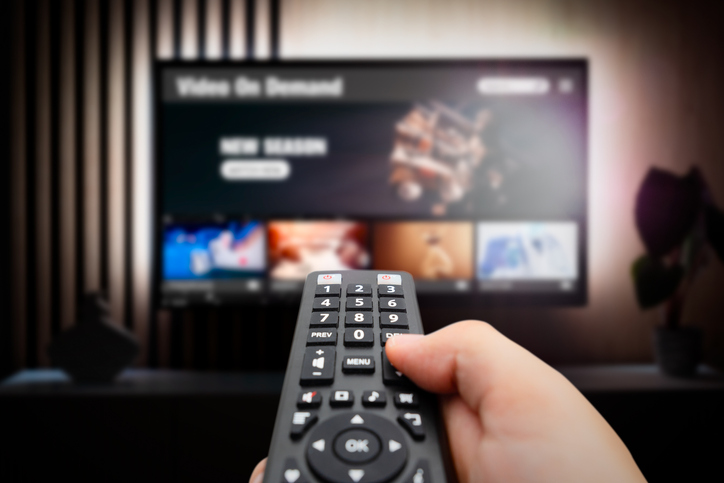Sometimes you just have to break up.
You’ve had a good run. Had some laughs. Enjoyed some good times. But you have this feeling there is someone better out there. Someone that doesn’t take advantage of you. Gives you what you want when you want it. And doesn’t cause a scene when you decide to move on.
Cable and satellite TV providers are experiencing this, as subscribers are fleeing at ever-faster rates as more people turn to streaming services and free over-the-air broadcasts. More than 1.1 million subscribers spurned AT&T, Dish Network, Charter, Comcast, Verizon, and Altice, in Q1 2019 alone. This is up from 631,000 lost subscribers in Q1 2018. That is roughly a staggering 80% year-over-year increase among the major providers. According to eMarketer, about 33 million consumers will have cut the cord by the end of this year, rising to 50 million in 2021 and 55 million in 2022. It estimates the percentage of adults no longer paying for cable or satellite TV will jump from 13% this year to 21% in 2022.
The big question is why, and what can the cable/satellite industry do about it?
Consumers have long cited the increasing price of cable TV packages as the main reason for dropping the services. Various studies have found consumers could save on average $85 a month by cutting the cord. But this mainly deals with people over the age of 40. A mid-2018 survey conducted by Magid Advisors found the top reason for millennials cancelling their pay-tv subscriptions was that they just don’t see a need for it anymore. That’s because this age group, gets enough of what it wants from streaming services such as Hulu, Netflix and Amazon Prime, not to mention the live TV streaming options.
This poses a major problem for cable companies as it is a steep and expensive mountain to climb trying to convince people they need a service that can be realized cheaper and more conveniently from other providers. And while cable companies have seen an increase in total video revenue in the mid-single digits since 2015 (despite falling subscribers), programming expenses have climbed much faster, with increases of 15-25%. This margin squeeze has led some cable companies to pull back on efforts to keep subscribers, and even abandon the video end of its business altogether in order to focus on the higher margin business of high speed broadband. All of this is why wired cable penetration percentages hover in the 40-50% range in most DMA’s. This is important to remember for advertisers to remember as a cable only plan will miss a lot of the population.
All is not lost though.
Even though cord cutting is increasing, it still has a long way to go to catch up to the nearly 90 million pay-tv subscribers in the U.S. Recent price hikes for streaming services have reduced its value proposition, and if cable companies are able to realistically access their position within the changing landscape and make some bold moves to increase its value and convenience proposition, it’s possible to stem the tide somewhat. For starters, here are some suggestions:
Stop charging monthly fees for equipment.
Having cable boxes and DVR’s can easily add $30-50 to the monthly bill. This amount on its own could pay for a streaming service! This equipment is never updated or replaced (unless broken). In most cases, the box you get when you start service is the same box you return when you end your service. Additionally, the box you get is the one somebody else just turned in. Instead, charge the monthly fee until it is paid off. At that point the subscriber owns it. Of course, the monthly rental fees are a huge revenue generator for the cable companies, but it must be done in order to be competitive with streaming services. After all, one of the major benefits of streaming services is there are no ongoing equipment fees.
Eliminate all of the various fees and surcharges that are not government mandated.
Again, there are none of these with streaming services, and there should be no valid reason why one cable company charges higher fees than another.
Eliminate most installation fees.
Installation is not complicated in most cases, and can be done in a matter of minutes, or in some cases self-installed and activated. There are no installation charges with streaming services.
Create realistic programming packages.
Giving access to 300 channels is not adding value to anyone. It’s a justification (and a poor one) for setting prices. Create a bundle of the top 10 viewed networks and let subscribers pay for the additional channels they actually use. Not only will this give subscribers the feeling of control, it will clearly show which networks deserve to be eliminated.
Provide remote access to programming.
With streaming services, content can be viewed anywhere a subscriber has an internet connection. While some cable providers have this access, not all do, and in some cases, charge for it. Make it easy for your subscribers to access your content.
Eliminate contracts and frustrating customer service.
Another major selling point for streaming services is the ability to cancel or sign up at any time with immediacy. While some cable companies have forgone contracts, others are still trying to snap that ball and chain to its customers. Additionally, there is no reason to have to call and speak with someone to cancel service. It’s just another reason to abandon cable.
When you are the most hated industry in the country (according to the 2018 American Customer Satisfaction Index), there is no shortage of suggestions for improvement. Ignoring the reality of the changing landscape will only result in a vicious cycle of cable companies continuing to raise prices, followed by more cord-cutting. And to paraphrase T.S. Elliot, this will be the way the cable industry ends, not with a bang but a whimper.

